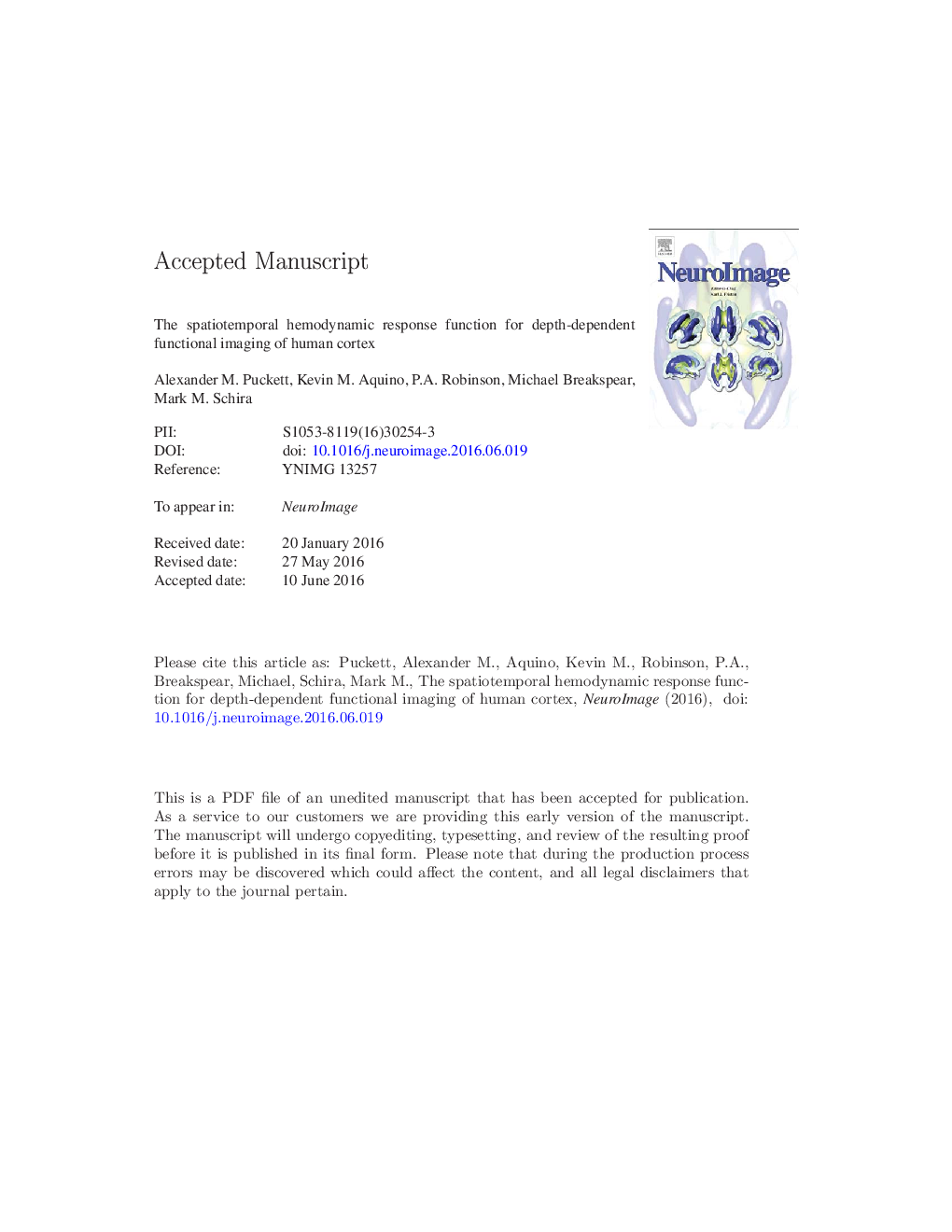| Article ID | Journal | Published Year | Pages | File Type |
|---|---|---|---|---|
| 6023436 | NeuroImage | 2016 | 41 Pages |
Abstract
The gray matter of human cortex is characterized by depth-dependent differences in neuronal activity and connections (Shipp, 2007) as well as in the associated vasculature (Duvernoy et al., 1981). The resolution limit of functional magnetic resonance imaging (fMRI) measurements is now below a millimeter, promising the non-invasive measurement of these properties in awake and behaving humans (Muckli et al., 2015; Olman et al., 2012; Ress et al., 2007). To advance this endeavor, we present a detailed spatiotemporal hemodynamic response function (HRF) reconstructed through the use of high-resolution, submillimeter fMRI. We decomposed the HRF into directions tangential and perpendicular to the cortical surface and found that key spatial properties of the HRF change significantly with depth from the cortical surface. Notably, we found that the spatial spread of the HRF increases linearly from 4.8Â mm at the gray/white matter boundary to 6.6Â mm near the cortical surface. Using a hemodynamic model, we posit that this effect can be explained by the depth profile of the cortical vasculature, and as such, must be taken into account to properly estimate the underlying neuronal responses at different cortical depths.
Related Topics
Life Sciences
Neuroscience
Cognitive Neuroscience
Authors
Alexander M. Puckett, Kevin M. Aquino, P.A. Robinson, Michael Breakspear, Mark M. Schira,
